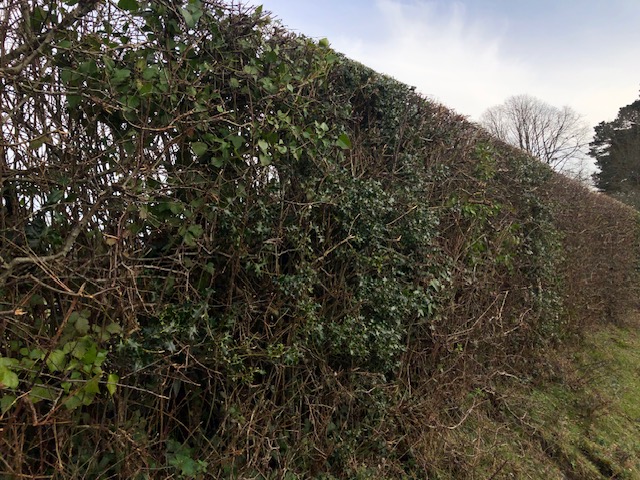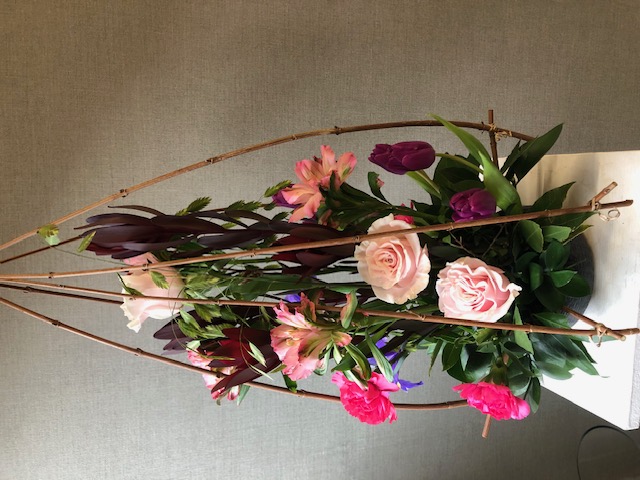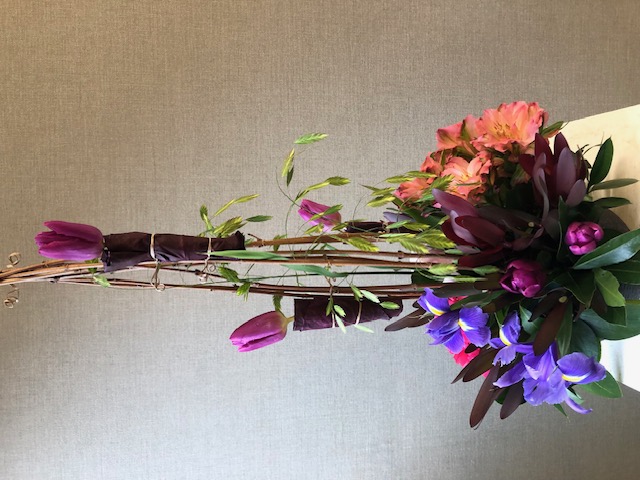
With continued heavy rains and flooding, the New Forest’s wilder landscapes have been too soggy and uninviting to explore. Instead, I’ve found myself walking along quiet country lanes and musing about hedgerows. I like looking within the skeleton-like framework of hedges, before they begin to green up, to spot birds and the occasional squirrel moving through their protected, often thorny, twiggy corridors. For me, it’s the opportunity to glimpse into a hidden world before it becomes concealed again, just like a beach at low tide.
Look more closely again, and you’ll notice how the evergreen ivy with their ripening dark black berries, and the glossy green leaves of holly add a splash of late winter colour to the hedge. Autumns rich abundance of bright red holly and hawthorn berries are long gone, gratefully eaten by hungry birds. Now it’s the pale-yellow hazel catkins that catch your attention – ‘lamb’s-tails’ that hang down like caterpillars dancing in the breeze and when touched gently release their pollen into the air.
The welcoming white blossom of blackthorn and the fuzzy-fluffy pussy willow catkins are beautiful and are especially important pollen and nectar sources for bumblebees and butterflies, newly emerged from their long hibernation.
Soon dormant buds, which were grown last summer and protected through the winter within thick overlapping bud scales, will become this year’s leaves and flowers. Triggered by increasing day length and warmth, buds begin to swell, burst open and new leaves unfurl. It won’t be long before our hedgerows and woodlands are an explosion of new life, colour and activity.
Most hedgerows in the countryside are trimmed annually in late winter to keep boundaries neat. This management also helps to thicken the hedge and improve its value for wildlife. So, before birds begin nesting in March, I like to forage a few side twigs before they are trimmed to use in my flower arrangements. Foraged twigs can be bent, cut and tied to make fabulous frameworks to support or enclose flowers and other natural materials. Here are a few of my arrangements.


I particularly like this spring flower design which uses vertical twigs to create the sense of a natural woodland or hedgerow with new growth appearing from within its wintertime protection. Beech nuts remind us of the autumn plenty and hazel catkins of new growth and the reassuring cycle of the seasons. The bright yellow and orange colours of the flowers are significant and suggest the warmth and vitality of nature in the months ahead.

Now it’s your turn to make some amazing hedge inspired creations – happy foraging!
